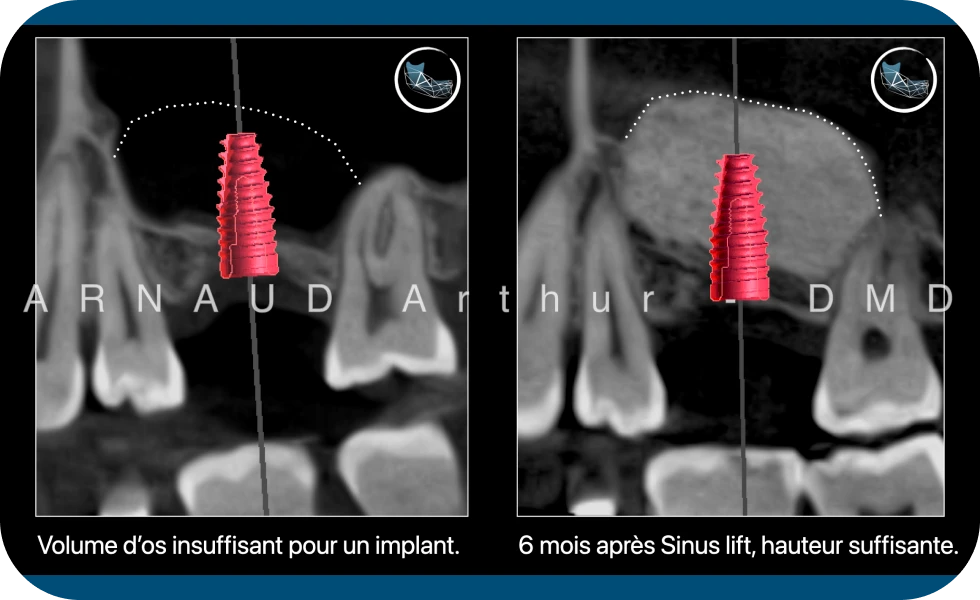Sinus lift
The maxillary sinuses lie behind your cheeks and above your upper teeth. These sinuses are air-filled cavities inside the facial bones, and are connected to the inside of the nose. Some tooth roots (such as premolars or molars) may protrude into the maxillary sinuses. When these teeth are removed, there is often only a thin bony wall separating the maxillary sinus from the mouth. When the sinus wall is very thin, it’s impossible to place dental implants in this area, because dental implants need bone to be held in place over the long term.
A sinus lift is one of the most common bone grafting procedures for patients with bone loss in the upper jaw who want to replace upper jaw teeth from the premolars.
The procedure aims to increase the bone level beneath the floor of the maxillary sinus above the bone crest. This allows dental implants to be placed and fixed in the newly created bone.
To be able to perform this procedure, the maxillary sinus concerned must be healthy, free from sinusitis or foreign bodies.
How is this procedure carried out?
Most often, a small incision is made in the premolar or molar region to expose the jawbone. A small opening is cut in the bone, and the membrane lining the sinus is gently pushed upwards. The underlying space created is filled with bone graft material, either from your own body or from other sources. Sometimes, synthetic materials that mimic bone formation are used. Once the bone has been placed, the incision is sutured and the healing process begins.
After several months of CT-verified healing, the bone becomes part of the patient’s jawbone, and the dental implants can be inserted and stabilized in the formed bone.

Can a sinus bone graft and dental implants be performed at the same time?
If there is sufficient bone in the upper jaw and sinus floor to stabilize the implant, sub-sinus bone grafting and dental implant placement can sometimes be performed in a single procedure. This saves several months of healing time and means that only one surgery is required instead of two. The only criterion for indication is the height of bone visible on the CT scan.
If there isn’t enough bone available, sinus augmentation will first have to be performed on its own, then the graft will have to heal for several months, depending on the type of graft material used. Once the bone has consolidated, the implants can be placed.
Sub-sinus bone augmentation is usually performed in the office under local anesthetic. In certain situations, the procedure can be performed under general anesthesia.
